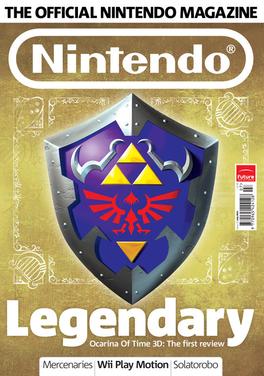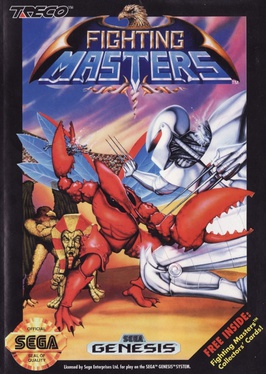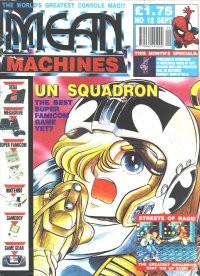
Out Run is an arcade driving video game released by Sega in September 1986. It is known for its pioneering hardware and graphics, nonlinear gameplay, a selectable soundtrack with music composed by Hiroshi Kawaguchi, and the hydraulic motion simulator deluxe arcade cabinet. The goal is to avoid traffic and reach one of five destinations.
The fifth generation era refers to computer and video games, video game consoles, and handheld gaming consoles dating from approximately October 4, 1993, to March 23, 2006. For home consoles, the best-selling console was the Sony PlayStation, followed by the Nintendo 64, and then the Sega Saturn. The PlayStation also had a redesigned version, the PSone, which was launched on July 7, 2000.

Chase H.Q. is a vehicular combat racing game, originally released as an arcade video game by Taito in 1988. It is sometimes seen as a spiritual successor to Taito's earlier Full Throttle. The player assumes the role of a police officer named Tony Gibson, member of the "Chase Special Investigation Department". Along with his partner, Raymond Broady, he must stop fleeing criminals in high-speed pursuits in a black Porsche 928.

Klax is a puzzle video game released in arcades in 1990 by Atari Games while Namco distributed the game in Japanese markets. It was designed and animated by Mark Stephen Pierce with the software engineering done by Dave Akers. The object is to catch colored blocks tumbling down a machine and arrange them in colored rows and patterns to make them disappear. Klax was originally published as a coin-op follow-up to Tetris, about which Atari Games was in a legal dispute at the time.
Newsfield Publications Ltd was a British magazine publisher during the 1980s and early 1990s.
1991 saw many sequels and prequels in video games, such as Street Fighter II, Final Fantasy IV, Super Castlevania IV, Mega Man 4, Super Ghouls 'n Ghosts, and The Legend of Zelda: A Link to the Past, along with new titles such as Sonic the Hedgehog, Battletoads, Lemmings, Sunset Riders, Duke Nukem, Fatal Fury: King of Fighters, and Streets of Rage. The year's highest-grossing video game worldwide was Capcom's arcade fighting game Street Fighter II. The year's best-selling system was the Game Boy for the second year in a row, while the year's best-selling home video game was Sega's Sonic the Hedgehog, which was also the year's top video game rental in the United States.
1990 saw many sequels and prequels in video games, such as Metal Gear 2: Solid Snake, Dr. Mario, Dragon Quest IV, Final Fantasy III, Phantasy Star II, and Super Mario World, along with new titles such as Fire Emblem: Shadow Dragon and the Blade of Light and Magic Sword. The year's highest-grossing arcade video games were Final Fight in Japan and Teenage Mutant Ninja Turtles in the United States. The year's best‑selling system was the Game Boy, while the year's best-selling home video game was Super Mario Bros. 3 for the Nintendo Entertainment System.
1989 saw many sequels and prequels in video games, such as Phantasy Star II, Super Mario Land, Super Monaco GP, along with new titles such as Big Run, Bonk's Adventure, Final Fight, Golden Axe, Strider, Hard Drivin' and Teenage Mutant Ninja Turtles. The year also saw the release of the Sega Genesis and TurboGrafx-16 in North America, and the Game Boy worldwide along with Tetris and Super Mario Land.

The GX4000 is a video game console that was manufactured by Amstrad. It was the company's short-lived attempt to enter the games console market. The console was released in Europe in 1990 and was an upgraded design based on the then still-popular CPC technology. The GX4000 shared hardware architecture with Amstrad's CPC Plus computer line, which was released concurrently. This allowed the system to be compatible with the majority of CPC Plus software.

The Sega Genesis, also known as the Mega Drive outside North America, is a 16-bit fourth generation home video game console developed and sold by Sega. It was Sega's third console and the successor to the Master System. Sega released it in 1988 in Japan as the Mega Drive, and in 1989 in North America as the Genesis. In 1990, it was distributed as the Mega Drive by Virgin Mastertronic in Europe, Ozisoft in Australasia, and Tectoy in Brazil. In South Korea, it was distributed by Samsung Electronics as the Super Gam*Boy and later the Super Aladdin Boy.

Official Nintendo Magazine, or ONM, was a British video game magazine that ran from 2006 to 2014 that covered the Nintendo DS, Nintendo 3DS, Wii, and Wii U video game consoles released by Nintendo.

Julian "Jaz" Rignall is a writer and editor. He has also produced content for corporate websites such as GamePro Media, publisher of GamePro magazine and GamePro.com, marketing collateral and advertising campaigns.

Forgotten Worlds, titled Lost Worlds in Japan, is a side-scrolling shooter video game by Capcom, originally released as a coin-operated arcade game in 1988. It is notable for being the first title released by Capcom for their CP System arcade game hardware.
Europress was a British magazine and software publisher based in Adlington, near Macclesfield, Cheshire. Their magazine publishing business was previously known as Database Publications. The software division was renamed in 1999 to Actualize.

Fighting Masters is a 1991 fighting video game developed by Aicom and ALU, and published for the Sega Genesis in Japan and later in North America by Treco. In the game, players assume the role of a hero to fight against an assortment of opponents on an apocalyptic setting to face against an entity known as Lord Valgasu. Co-directed by Hajime Kusano and Ramō Kobayashi, the title was created by some of the same team that would later work on various projects at Almanic Corporation such as E.V.O.: Search for Eden. It was met with mixed reception from critics since its release.
Paul Glancey is a video game producer and former journalist in the United Kingdom. He made his first steps into the videogame industry as a writer with Zzap!64 and CVG before contributing a few reviews to Mean Machines. Like Julian Rignall and Richard Leadbetter, he tended to appear in both EMAP magazines at the same time.

Gley Lancer is a 1992 scrolling shooter video game originally developed by NCS Corporation, published in Japan by Masaya and in South Korea by Samsung for the Sega Mega Drive/Genesis. It was re-released in 2019 by Japanese publisher Columbus Circle. It follows Lucia Cabrock, daughter of Earth Federation Navy admiral Ken, who disappeared while fighting in a war between humans and an unknown alien race that possess the ability to teleport, joined by her friend Teim on a journey to save her father by stealing a starfighter. Controlling the titular fighter ship, the player must fight waves of enemies and bosses, while avoiding collision with their projectiles and other obstacles. The Gley Lancer ship is equipped with two satellites options, whose positions and formations are determined by the player.










